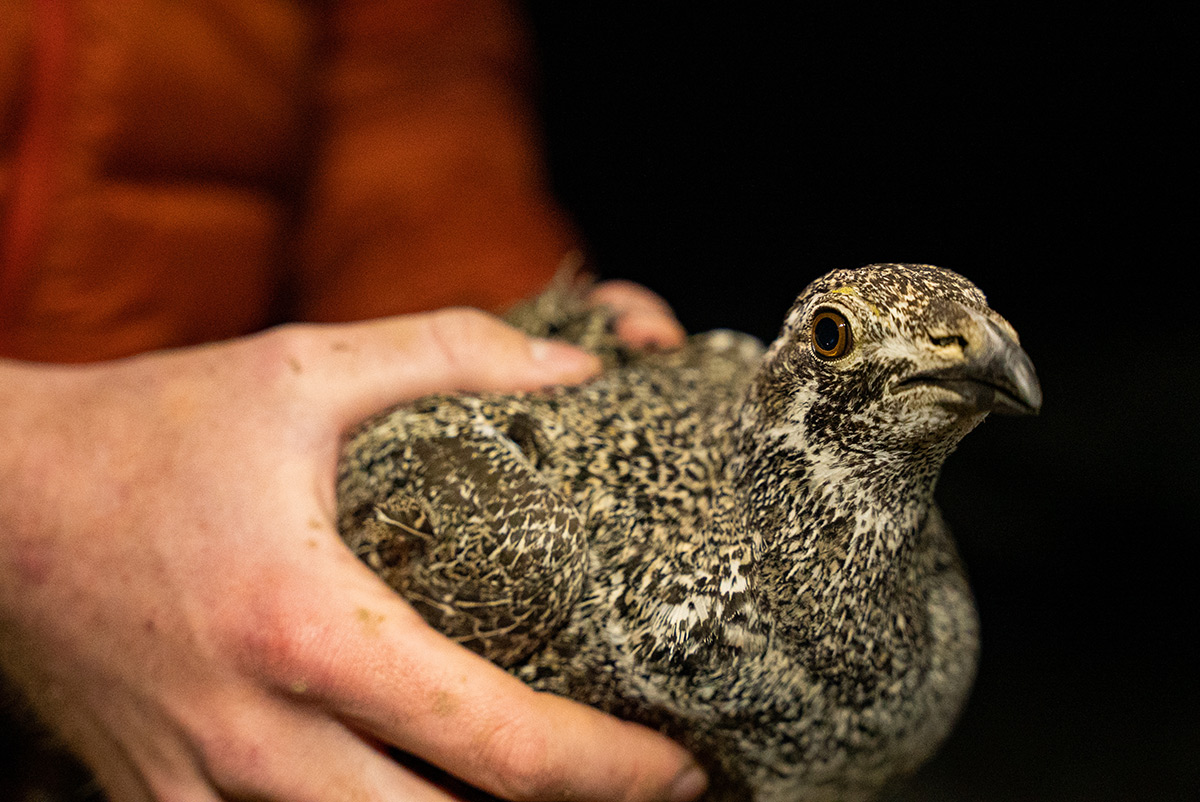U of I Study Finds Moderate Cattle Grazing Has No Effect on Sage Grouse Nest Success
October 24, 2023
MOSCOW, Idaho — Sage grouse and cows can coexist on the same land without declines in greater sage grouse nest success or insect abundance, according to a 10-year University of Idaho study.
In fact, according to the research, there are upshots for grouse living side-by-side with cows.
“Nesting success doesn’t seem to be affected by low to moderate levels of cattle grazing, and insect biomass increases with grazing,” said Courtney Conway, U of I professor of wildlife sciences.
The idea for an extensive grouse and cattle grazing research project was spurred by opposition to spring cattle grazing on federal land in the early 2000s and a lack of science to inform the debate. The decade-long research project wrapped up data collection in August 2023.
Conway joined forces with U of I professor of rangeland ecology Karen Launchbaugh, biologists in the Bureau of Land Management — the agency that oversees much of the sage grouse habitat in southern Idaho — Idaho Fish and Game, several ranchers who have grazing permits within sage-grouse habitat, and other partners in Idaho to bring scientific data to the debate.
“Many decisions regarding sage grouse and cattle were being made by land managers, but there wasn’t a lot of science to rely on,” Conway said. “We just didn’t know what effect spring grazing had on nesting grouse, brood production or anything else.”
Working closely with local ranchers who agreed to participate in the long-term project, Conway’s group of researchers annually collected and analyzed data from five research sites in Idaho.
“I think this is a significant outcome for the ranching community, which has wondered all along what they would do if scientists learned that their spring grazing was bad for grouse,” said Launchbaugh, co-lead investigator. “Had we found that spring grazing had a negative effect on grouse populations, it could have resulted in the loss of grazing allotments on federal land, something cattle ranchers, especially smaller operations, need for their businesses to survive.”
—
Media Contact:
Courtney Conway Ph.D.
Professor of Wildlife Sciences
Unit Leader of the Idaho Cooperative Fish and Wildlife Research Unit
University of Idaho
208-885-6176
cconway@uidaho.edu

About the University of Idaho
The University of Idaho, home of the Vandals, is Idaho’s land-grant, national research university. From its residential campus in Moscow, U of I serves the state of Idaho through educational centers in Boise, Coeur d’Alene and Idaho Falls, nine research and Extension centers, plus Extension offices in 42 counties. Home to more than 12,000 students statewide, U of I is a leader in student-centered learning and excels at interdisciplinary research, service to businesses and communities, and in advancing diversity, citizenship and global outreach. U of I competes in the Big Sky and Western Athletic conferences. Learn more at uidaho.edu.






